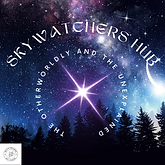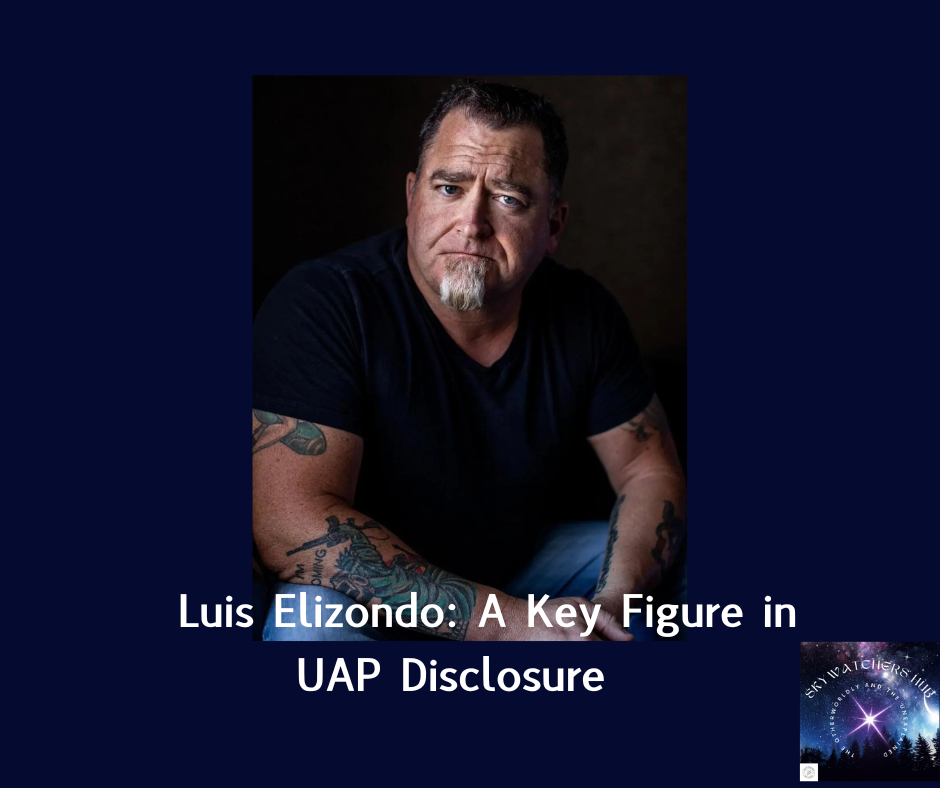Christopher Mellon & the Push for UAP Disclosure: Peeling Back the Veil
- Skywatcher's Hub

- Mar 5
- 5 min read

In the growing movement for UAP (Unidentified Aerial Phenomena) disclosure, few names resonate as strongly as Christopher Karl Mellon. A former U.S. government official, politician, and investor, Mellon’s deep background in national security, defense, and intelligence has positioned him as one of the leading figures advocating for the U.S. government’s transparency on the UAP phenomenon. Mellon’s unique blend of government experience and private sector involvement has provided him with a rare perspective on the importance of disclosure and the need for greater public understanding of UAPs.
So, how did Mellon transition from a career in government to become a key advocate in the push for UAP transparency, and what has shaped his ongoing work in this area?
A Career in National Security and Government

Christopher Mellon’s career began in the heart of U.S. national security, where his work in defense and intelligence would later provide the foundation for his advocacy in UAP disclosure. Mellon served in several important roles throughout his career, including Deputy Assistant Secretary of Defense for Intelligence and staff member of the Senate Select Committee on Intelligence. His expertise was deeply rooted in understanding the complexities of U.S. national security, intelligence operations, and defense policy.
During his time in government, Mellon worked directly with high-level officials to shape defense policy and ensure that U.S. intelligence operations aligned with national security priorities. His experience allowed him to build deep relationships within the government, particularly in the areas of intelligence gathering and strategic defense, which would later provide him with insights into one of the most closely guarded topics in the U.S. government: UAPs.
In these senior-level positions, Mellon had access to highly classified information about U.S. defense capabilities and intelligence reports. However, what set him apart was his ability to grasp the intersection between national security and the unknown. It was in this context that Mellon first became aware of the UAP phenomenon and the significant implications it could have on U.S. defense strategy and intelligence operations.
The Turning Point: Encountering UAPs and Uncovering Government Secrets

Mellon’s exposure to the UAP phenomenon began with his role at the Pentagon. As someone with an insider’s knowledge of national security operations, Mellon became increasingly aware of reports regarding UAP encounters from military personnel, including those from Navy pilots and radar operators. These were not mere rumors or speculative stories—they were credible, documented incidents involving military assets, advanced technologies, and unexplained phenomena that could not easily be dismissed.
What struck Mellon most profoundly was the sheer volume of credible sightings by military personnel, along with the mysterious nature of the phenomena involved. UAPs appeared to display flight characteristics that defied conventional understanding of physics, including sudden accelerations, sudden changes in direction, and speeds far beyond anything known in military aviation. This realization set off a chain of questions that would become central to Mellon’s advocacy for UAP disclosure.
Moreover, Mellon became increasingly aware of the U.S. government's unwillingness to fully address these sightings. Many of the encounters had been swept under the rug, classified as "anomalies," or outright ignored. Given his background in national security, Mellon knew that the government had an obligation to investigate these phenomena thoroughly, especially if they represented a potential national security threat or a breakthrough in technology. Yet, for decades, the government had maintained a policy of silence and secrecy on the matter.
As someone deeply committed to transparency, Mellon found this approach to be deeply troubling. His understanding of the importance of honest and open government led him to believe that the public—and indeed, the scientific community—deserved to know the truth about what was happening.
Becoming an Advocate for UAP Disclosure

With his extensive knowledge of government operations, Mellon took the bold step of speaking out publicly about the UAP issue. As a former U.S. government official, he had the credibility and inside knowledge to make an impactful case that the government had been hiding important information from the public for far too long. In 2017, Mellon played a key role in helping to bring the New York Times story to light, which exposed the existence of the Pentagon’s Advanced Aerospace Threat Identification Program (AATIP)—a secretive government program designed to investigate UAPs.
Mellon’s decision to go public with this information was a pivotal moment in the ongoing push for UAP disclosure. The revelations from the AATIP program demonstrated that the U.S. government had been investigating UAPs for years, but the findings had remained classified. The story, which was groundbreaking in its own right, opened the door for other government insiders, military personnel, and experts to come forward with their knowledge and experiences regarding UAPs.
For Mellon, this was just the beginning. As he continued to speak out, he began advocating for greater government transparency on UAPs, calling for official investigations, the declassification of relevant reports, and an open public dialogue on the subject. Mellon’s background in intelligence and defense provided him with the tools to understand not only the military implications of UAPs but also the broader geopolitical context in which these phenomena should be studied.
Mellon’s Influence on the UAP Discourse

In the years since his involvement in the AATIP revelation, Christopher Mellon has continued to be a vocal advocate for UAP disclosure. He has repeatedly called for scientific inquiry and public investigations into the phenomena, emphasizing that the subject should not remain a matter of secrecy or speculation. He has argued that the U.S. government must be more forthcoming about what it knows, given the potential implications for national security, technology, and even humanity’s understanding of its place in the universe.
In addition to his calls for greater transparency, Mellon has become involved in a number of efforts to encourage the U.S. government to take UAPs seriously. He is a strong proponent of creating official organizations, similar to the U.S. UAP Task Force, that would have the resources and mandate to investigate UAPs comprehensively. Furthermore, Mellon believes that UAP investigations should not be limited to military or intelligence agencies alone but should include independent scientists, experts, and private-sector organizations. This, he argues, would create a more robust and credible framework for studying the phenomenon.
Mellon has also worked closely with To the Stars Academy of Arts & Science (TTSA), an organization co-founded by former Blink-182 frontman Tom DeLonge, which has focused on the disclosure of UAP-related information. Through TTSA and other efforts, Mellon has helped to bring the UAP issue into the public spotlight and has fostered a larger discussion about what the government and military know and what needs to be made public.
Legacy: Shaping the Future of UAP Disclosure

Christopher Mellon’s work in UAP disclosure is a testament to the power of government insiders pushing for change from within. His career in national security gave him the experience and authority to question the status quo and to challenge the government’s longstanding secrecy on UAPs. Mellon’s transition from a government official to an outspoken advocate has played a critical role in advancing the conversation and pushing the U.S. government toward greater transparency.
Today, Mellon remains a prominent figure in the UAP disclosure movement, and his voice continues to shape the conversation about UAPs. As new reports emerge, as more military personnel come forward, and as public interest in UAPs grows, Mellon’s influence in pushing for government accountability and scientific investigation remains central to the broader UAP disclosure movement.
Christopher Mellon’s legacy is one of challenging secrecy, advocating for the truth, and pushing the U.S. government to acknowledge the unknown. As the world moves closer to uncovering the truth about UAPs, Mellon’s work continues to be a driving force in making that transparency a reality.

.png)












Comments